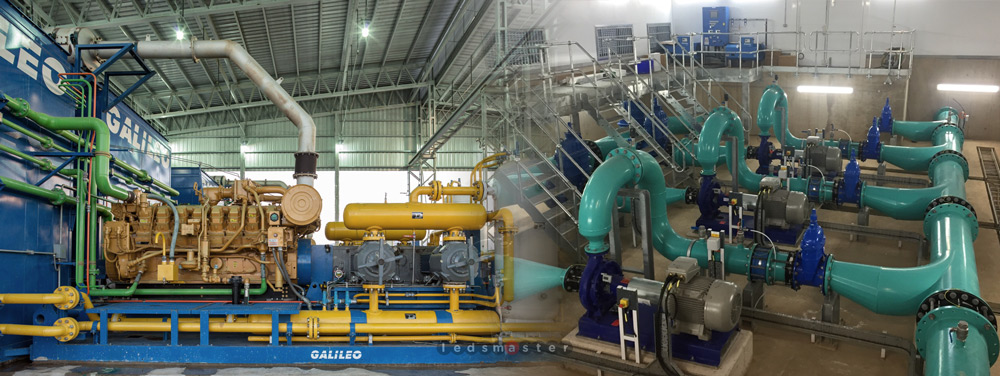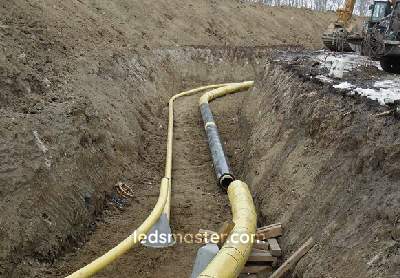Imagine a bustling pipeline station, the nerve center of a vast network transporting essential flammable materials. In such a high-stakes environment, where every detail matters, the right lighting can make all the difference. Enter our cutting-edge pipeline station lighting solutions, designed to shine a light on safety and efficiency. Engineered to withstand the rigors of hazardous conditions and ensure clear visibility without compromising safety, our lighting products are the ultimate choice for facilities where precision and protection are paramount. Illuminate your operations with confidence and transform your pipeline station into a beacon of reliability and safety.
Let’s address the fundamental questions: What exactly is explosion-proof lighting, and why is it crucial for pipeline stations? While some of you might be familiar with the concept, let’s revisit it for those who are new to it.
Explosion-proof lighting fixtures are specifically designed for use in hazardous environments. These are areas where there is a significant risk of explosion due to the presence of combustible materials. These materials can be in various forms, including gases like toluene, ethanol, or natural gas, as well as dusts such as coal, flour, or grain.
A prime example of such a hazardous environment is a pumping station. These facilities handle flammable or explosive chemicals like gasoline, LPG, and biofuel. In these settings, the risk of ignition from other electrical equipment is substantial, making explosion-proof lighting essential for maintaining safety.
Get your complimentary lighting design today
Table of Contents
ToggleWhen working in environments with combustible materials, it’s crucial to use specialized equipment designed to minimize the risk of ignition. Pipeline stations, which often handle flammable substances, are a prime example of such hazardous locations. One essential tool in these settings is explosion-proof lighting.
Consider a scenario where you need to enter a large tank filled with combustible gases, and it’s pitch dark inside. You obviously wouldn’t light a match, as that would pose a significant danger. Instead, you’d require lighting that is specifically engineered not to ignite any flammable materials. Explosion-proof lighting serves this exact purpose. As the name suggests, these lights are designed to operate safely in environments where flammable gases or dust are present, without sparking or igniting them.

There’s a common misconception about explosion-proof lighting that needs to be clarified. Some believe that these lights somehow block all vapors and gases from coming into contact with live electrical components. This is not accurate. In reality, many explosion-proof lights allow gases to enter the fixture but are engineered to prevent any potential ignition. They are constructed to ensure that any sparks or heat generated inside the light do not escape and ignite the surrounding gases or dust, thus protecting workers and maintaining safety in hazardous environments.
 Pipelines, which are often buried underground, lead to compressor and pumping stations located above ground. Despite their seemingly small size, these above-ground stations play a critical role. Inside each station, numerous components, including controls, turbines, valves, and compressors, work in concert to ensure the safe and efficient transport of products. The complexity and activity within these stations underscore the need for robust safety measures, including appropriate lighting solutions.
Pipelines, which are often buried underground, lead to compressor and pumping stations located above ground. Despite their seemingly small size, these above-ground stations play a critical role. Inside each station, numerous components, including controls, turbines, valves, and compressors, work in concert to ensure the safe and efficient transport of products. The complexity and activity within these stations underscore the need for robust safety measures, including appropriate lighting solutions.
Explosion-proof lighting is meticulously engineered to operate safely in hazardous environments, such as pipeline stations, where the risk of fire or explosion is significant. These lights are designed with several crucial features and components to ensure they perform reliably and securely, even in the most dangerous conditions.
A fundamental aspect of explosion-proof lighting is the use of sealed enclosures. In pipeline stations, where combustible gases and dust are commonly present, these enclosures are essential for safety. Designed to be completely airtight, they prevent any internal sparks or heat from escaping into the surrounding environment. This is crucial in environments where even a small spark could ignite flammable materials. The enclosures are robustly constructed to contain any potential explosions or ignition sources within the fixture itself. This design ensures that, even if an internal component fails or generates a spark, the hazardous materials outside remain unaffected, thereby protecting the pipeline station and its personnel from harm.
The construction of explosion-proof lights is another vital safety feature. In pipeline stations, the lights are built from high-grade materials such as aluminum or stainless steel. These materials are selected for their strength and durability, capable of withstanding harsh environmental conditions. Pipeline stations often experience extreme temperatures, exposure to corrosive substances, and physical impacts. The durable construction of these lighting fixtures ensures they can endure such stresses and maintain their functionality over time. This rugged design helps to ensure that the lighting remains reliable and effective, even in challenging operational environments.
Effective thermal management is crucial in explosion-proof lighting, particularly in the context of pipeline stations. These lights incorporate advanced cooling systems to prevent overheating, which could otherwise lead to ignition. Pipeline stations handle flammable substances, and any risk of overheating needs to be meticulously managed. The lights are designed to dissipate heat efficiently, ensuring they operate within safe temperature ranges. By preventing overheating, the lights minimize the risk of ignition of surrounding combustible materials. Proper thermal management is therefore essential for maintaining safety and ensuring the reliable performance of the lighting in high-risk environments.
For explosion-proof lighting to be considered safe for use in hazardous environments such as pipeline stations, it must comply with stringent safety certifications and standards. Certifications such as ATEX (Atmosphères Explosibles) or IECEx (International Electrotechnical Commission Explosive) are internationally recognized and ensure that the lighting fixtures meet rigorous safety requirements. These standards assess various aspects of the lighting design, including its ability to contain explosions, withstand environmental stresses, and operate safely in hazardous conditions. Compliance with these certification standards is critical to ensuring that the lighting is appropriate for use in environments where there is a heightened risk of fire or explosion.
In pipeline stations, where the handling of flammable substances presents a significant risk, explosion-proof lighting is indispensable. These specialized lights are meticulously engineered to operate safely in hazardous conditions by incorporating sealed enclosures, durable construction, effective thermal management, and rigorous certification standards. By preventing ignition of combustible materials and maintaining reliable performance, explosion-proof lighting ensures both the safety of personnel and the efficient operation of critical infrastructure.